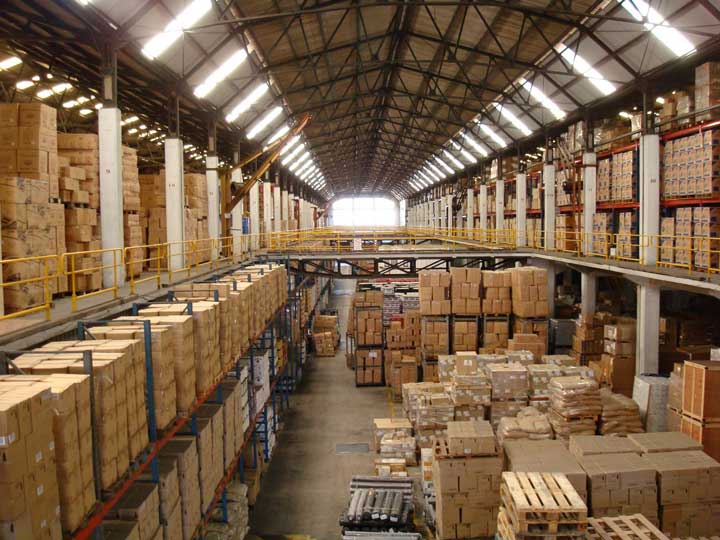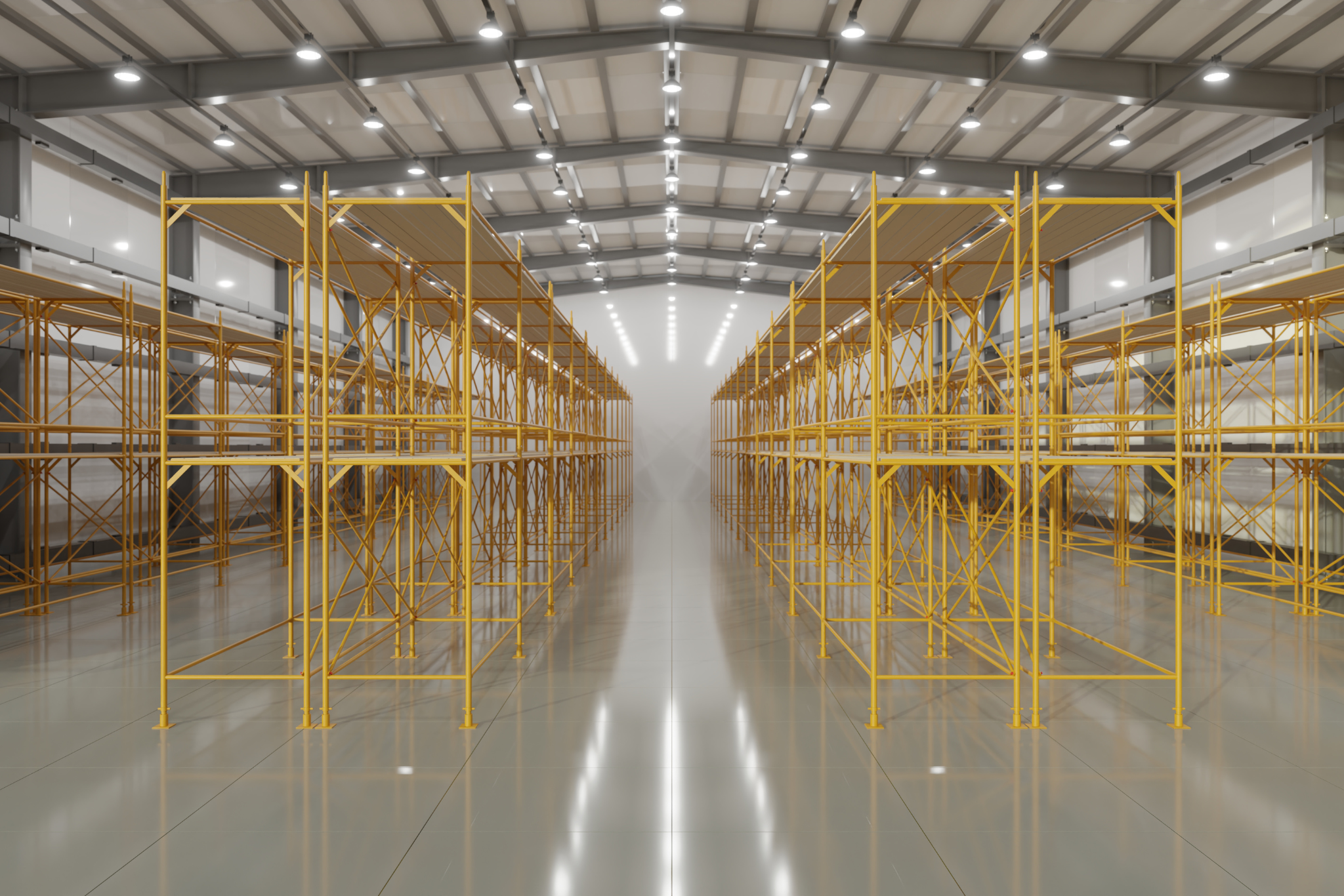
There is an old saying in warehousing: “If there is available space, someone will eventually fill it.” This often happens sooner than later, and it’s not uncommon for a warehouse to run out of space even during slow periods.
Common reasons warehouses run out of space include:
- Rapid growth or seasonal peaks.
- Bulk buying or planned inventory builds.
- Facility consolidations or slow sales periods.
To address space deficiencies effectively, warehouses need to understand the root causes. Generally, space issues fall into three categories:
- Too much of the right inventory.
- Too much of the wrong inventory.
- Poorly utilized warehouse space.
1. Too Much of the Right Product
An abundance of the right product appears positive in terms of customer service and order fulfillment goals, as product is readily available to fill customer orders. Yet, as the sales staff and buyers celebrate making customers happy by fulfilling every order 100%, the warehouse operates well below established productivity and safety standards. A look into this type of warehouse will reveal pallets of product stored in aisles, stacked in dock areas, placed on rack end caps, or multiple SKUs of product mixed in single bin locations. Blocked visibility creates safety hazards, lack of ease in locating inventory, decreased labor productivity and multiple handlings of product. The upside is that these products usually move quickly through the warehouse and space problems exist for only several weeks.
2. Too Much of the Wrong Product
Having too much of the wrong product is often an indicator that sales projections and/or production planning were incorrect, but it also frequently indicates that the warehouse is not managing inventory levels or obsolete product properly. Unlike having too much of the right product, where inventory peaks can be handled with extra labor, having the wrong product usually results in inventory remaining untouched in the warehouse for months and even years.
A good example of this lack of inventory management occurred at a mid-sized consumer goods supplier. Upon reaching a full warehouse condition at both their manufacturing and distribution center (DC), the company brought in a consultant who, after examination of their inventory, discovered that 600 of the 3,000 pallets at the manufacturing center had not been used for production in the last 12 months. At the DC, over 400 of the 4,500 pallets on-hand had no sales in the previous three years. Another 500 pallets had zero sales activity in the past 12 months. Too much of the wrong product was solved with management approval to take a one-time hit to the bottom line. Obsolete inventory has little to no value on the open market, but the earlier it is identified, the quicker a company can cover any losses and better manage its assets.
3. Poorly Utilized Warehouse Space
This condition is usually caused by steady growth, changing storage requirements (change in product mix) and ever increasing service requirements. Poorly utilized space is a common occurrence that happens in all warehouses occasionally and is non-exclusive of the inventory type or storage conditions in the warehouse.
Traditionally, warehouses are built and equipped to handle projected volumes, a set number of products and limited unit loads. Then they are expected to adjust to customer demands as well as be more efficient over time. To accomplish these conflicting goals, warehouses generally accept long-term penalties to accomplish short-term goals like creating customized floor-ready merchandise for end-cap displays, hand-pricing a key customer’s merchandise at the piece level, or creating mixed loads to simplify customer processing when goods traditionally ship in full case or full pallet quantities.
All of these customization steps take valuable floor space and labor from primary warehouse functions. Other common instances of poor space utilization include low vertical space utilization, wide aisles (over nine feet), and multiple products in single bin locations and/or partial unit loads being stored in full unit load locations. These types of problems should be addressed with physical layout and workstation design changes.
Finding More Space
Often inventory excesses and general space constraints result from any of the above-mentioned conditions, but consolidation of operations or continuously improving sales creates real space deficiencies. When relocation or facility expansion are not options, three paths may be followed:
- Leveraging outside storage.
- Internal warehouse redesign.
- Improving inventory management.
Outside or Temporary Storage
Inventory builds traditionally occur to handle seasonal peaks or new product introductions. Demand for products such as cold weather garments that fly off the shelves during the first significant snowfall of the season or the first release of a long-awaited music CD are prime examples of planned inventory builds. In some cases, these builds are unavoidable and require temporary measures to handle the inventory peaks.
One method to handle these temporary builds is using third party warehousing to store excess inventory or ship orders directly to customers. Unfortunately, a premium is charged for these services on short-term contracts vs. year-round deals. Several manufacturers and distributors have reduced the penalty of seasonal storage by forming alliances with companies that have different seasonal peaks, but similar storage needs.
For example, a sausage manufacturer that has inventory peaks in winter and spring each year to meet high summer demand for cook-outs might partner with a turkey producer that has a late summer and fall build for Thanksgiving and Christmas holiday demands. Together the companies can contract with a third party for year-round services.
A second method is to store product on trailers for short periods. This method can be extremely expensive as monthly quality trailer rental or demurrage can range from $180 to $220, not including drop-off charges, trailer loading and unloading labor expenses, and security risks. Trailer storage is most effective when the company has a true partnership with a dedicated carrier. Often the carrier will manage the freight and store trailers in their yard as part of the freight agreement. The carrier benefits by having guaranteed freight throughout the year and by being able to charge a profitable rate for all routes.
Warehouse Redesign
It can be said that the warehouse redesign process is more art than science and more common sense than theory. The primary objectives of warehouse redesign are to:
- Use space efficiently
- Allow for the most efficient material handling
- Provide the most economical storage in relation to costs of equipment, use of space, damage to material, handling labor and operational safety
- Provide maximum flexibility in order to meet changing storage and handling requirements
- Make the warehouse a model of good housekeeping
Eight steps are required to make this happen:
- Measure the space you have to work with
- Define the fixed obstacles (columns, walls, doors, clearances, etc.)
- Understand the product stored and handled
- Define storage condition zones
- Throughput/replenishment requirements
- Unit handling loads
- Establish the material flow paths
- Determine auxiliary facility requirements (offices, dock staging, hold and inspection, etc.)
- Generate alternatives
- Evaluate alternatives
- Recommend and implement improvements
All alternatives must consider not only space, but also material handling, and impacts on labor. If too much of the right product exists in the warehouse in sporadic waves, the following should be considered as alternatives:
Bulk Storage: Appropriate for large unit load quantities of single products that are stackable or for low clearance areas (under 20 feet) for stackable product. This type of storage is ideal as large quantities of single SKUs may be stored in large blocks.
Portable Rack: Like bulk storage, but used for non-stackable product. Portable racks allow both the utilization of vertical cube in a warehouse and the added advantage of being re-configurable for any product mix. The disadvantages for this alternative are the high cost and the storage space required for portable rack components not in use.
Creative Ways to Create More Space
Too much of the right product can be handled with simple storage methods, but what happens when there is just too much inventory-right or wrong-of a mixture of products in variable quantities in the warehouse?
The classic warehouse is a mixture of bulk storage and wide aisle selective (10 to12 feet) pallet rack. This design works well when fast moving items arrive in large quantities and are stored in bulk, while medium and slow moving items are stored in pallet rack. However, due to product proliferation and shrinking customer order quantities, many warehouses have lower quantities of all individual products are stored, creating a space shortage as less dense pallet rack configurations are installed to handle ever-increasing pick face requirements.
Vertical Cube Utilization
To increase the number of pick faces and storage density, the first step is to ensure that the facility’s entire vertical cube is effectively utilized. Vertical cube includes all space above loads, total building clearance, space above cross aisles, space above work and pick areas, and space above docks.
Within the rack, the opening height should be approximately six inches larger than the load height to facilitate easy and safe loading and unloading of product. A quick formula to check this is to take a sample of unit loads stored in the warehouse and divide a typical vertical bay of product height by the clear height in that area of the building. If the space is utilized less than 50 percent, a great opportunity for improvement exists. If the space is utilized between 50 to 75 percent a moderate opportunity for improvement exists. A well-designed facility will have approximately 75 to 80 percent vertical utilization. In order to recapture lost space, the location opening sizes should be changed to meet the existing unit load dimensions. This means creating multiple opening heights and implementing a re-warehousing program to move partial slow moving pallets into shorter locations.
If product is received and stored in less than one-half pallet loads, decked rack and case flow rack locations should be considered. Typically, the pallet accounts for 10 percent of the storage requirement of a unit load. By hand stacking cases on decked rack or into case flow rack, the pallet is removed from storage. The density of the pick faces then increases dramatically by narrowing the pick face dimension from a pallet width down to a single case width. Both decked rack and case flow rack may be utilized with pallet rack to optimize vertical cube utilization. It is often found that gains of 20 to 50 percent in vertical utilization can be obtained by simply moving a few beams and adding a small amount of decking or case flow rack.
Tunnel Rack
Another often under utilized space is the area over cross aisles. This area can be converted to storage space in back-to-back rack sections, also referred to as “tunneling the rack.” In a warehouse with 20- to 24-foot clearance with four levels of storage, generally the top two levels of rack may be tunneled. This will improve unit load storage capacity by 5 to 10 percent. When tunneling over aisles, it should be noted that pallet decking or netting should be added to prevent falling cases from reaching the floor. To tunnel existing rack, custom measured and fit beams must be purchased to fit the space between existing sections of rack which often vary by up to an inch in length. Tunneling of rack should be done in conjunction with forklift training to ensure operators are moving with the fork mast down.
Rack Over Docks
Docks poorly utilize vertical cube as the majority of activity occurs in the lower 10 feet of space. A good opportunity exists to place racking over the dock doors for storage of pallets or other packaging materials. Another potential gain in the dock area is for the long-term storage of staged materials in rack rather than on the floor for shipments that have been pre-picked and are awaiting final release.
Mezzanines
In operations such as direct-to-consumer or small order fulfillment, most items are picked from broken case pick lines and then packed into shipping containers at secondary pack stations. These areas generally require low clearance, but are often located in the general warehouse building. One method to regain the space in these areas is to build a mezzanine structure above these work areas or to move the work areas to the mezzanine. This will yield roughly 50 percent vertical space utilization improvements, but is an expensive option that reduces future flexibility.
Properly designed mezzanines can be used for anything from bulk storage areas, to process areas, to value-added service areas (VAS). A large pharmaceutical distributor recently added two such mezzanines to create space for additional packaging materials and refrigerated storage. The first mezzanine was utilized for two days of corrugate storage on the lower level and the upper level was used for order inspection, invoice printing and final packaging. The second mezzanine was designed for refrigerated packaging materials on the upper level and a consolidated manifesting operation on the lower level. The additional space was required to handle increasing small quantity shipments of vaccines to doctors and small clinics. The addition of the mezzanines extended the life span of the existing DC an estimated two years before relocation will be required.
Alternative Storage Methods
When minor facility alterations like tunneling rack and adding mezzanines are not enough, the next step is to consider alternative storage methods to wide aisle pallet rack. All options below are dependent on column spacing and other fixed obstacles allowing for the design changes. These options include:
- Narrow Aisle Pallet Rack (NA): In a narrow aisle rack configuration, the aisle is reduced to between 9-feet and 10-feet clear load-to-load and requires either a stand-up reach truck or a 3-wheel fork truck. However, whenever rack is relocated, so must lighting and in-rack sprinklers if they are present in the existing configuration. In addition, new trucks must be purchased. A 10 to 15 percent gain in storage locations can be obtained.
- Very Narrow Aisle Pallet Rack (VNA): In very narrow aisle rack, the aisle width is generally the load width plus six inches minimum. The actual width for a standard GMA (40 x48-inch) pallet operation would generally be 66 inches rack-to-rack. This allows for pallet overhang in the rack and sway in the truck mast to minimize damage. In VNA rack, special narrow aisle trucks called turret trucks or swing mast trucks are required to put away and to retrieve unit loads. Case and piece picking occurs on all levels with man-up order picker trucks. The potential space improvements when the column spacing works is between 25 and 35 percent over wide aisle racks. However, the cost of equipment is significant as well as the restrictions to safe operations. Turret and swing mast trucks can run between $65,000 and $100,000 each and order pickers trucks cost between $20,000 and $25,000 each. For high bay (over 40 ft.) operations the cost of trucks increases as the type of truck becomes highly specialized.
- Double-Deep Pallet Rack and Pushback Rack: Double-deep and pushback rack can be applied when and if multiple pallets of the same SKU exist in storage. The basic premise of double-deep rack is to put two sections of pallet rack back-to-back with only one access aisle. Pushback rack uses the same premise, except that the pallet moves on carts or rollers to the forward position upon removal of the forward pallet. In a wide aisle environment, double-deep or pushback sections may be created to add density. However, double-deep reach trucks for double-deep rack and standard stand-up reach trucks for pushback rack will be capable of operating in a typical narrow aisle environment if properly designed.
- Pallet Flow Rack: Pallet flow rack works well in multiple-pallet environments of single SKUs. The primary advantage is the elimination of aisles by allowing storage depths of three to 20 pallets on multiple levels. The primary disadvantage is the relative inflexibility to handle changing inventory requirements and rack cost ($200 to $350 per position). Pallet flow rack works best in case or full pallet distribution operations.
- Small Parts Storage: One of the last changes to the warehouse is to move all less-than case-products from pallet rack locations, including decked rack, into shelving, drawers and vertical or horizontal carousels. This will open up locations for faster moving products and generally reduces the order picking labor associated with slow movers.
All physical changes in a warehouse incur a cost, while only being a part of the ultimate solution. After creating the ideal location types and sizes for the present operating requirements, a program must be put in place to review and adjust the storage plan on a regular basis.
Improving Inventory Management
In order to properly manage inventory, information on demand at all levels of the supply chain must be maintained in real-time. This includes information at point-of-sale (POS) down to raw material deliveries at suppliers. This requires a real-time warehouse management system (WMS) to maintain inventory and transaction data. A program of cycle counting should also be implemented to track inventory and to ensure obsolete product is not occupying valuable space within the warehouse. A WMS can help with this as well as to manage an on-going re-warehousing effort. A good WMS is able to assign receipts to the best storage location based on product activity and unit load dimensions.
Management may then control of the flow of product from suppliers using blanket purchase orders that allow draws of inventory from a pre-planned pool of stock with short lead times. This minimizes on-hand inventory by having real-time planning information for reordering the right stock. Another approach to managing inventory is to have only the fast and medium moving products stored in the warehouse and to have suppliers direct-ship slow moving product to customers. This method can commonly eliminate the storage and pick face requirements for over 50 percent of the total items offered, while only impacting five percent of the total orders. For other ways ideas on how to better manage inventory, read Tompkins International’ paper “25 Ways to Lower Inventory Costs.”
Making the Most of Your Warehouse Space
The implementation of any single or combination of these strategies can create additional storage space in your warehouse. However, space optimization should not come at the expense of labor efficiency, safety, or throughput. Companies must focus on continuous improvement and flexibility to handle both short-term needs and long-term growth.
Read More:
How can we help improve your supply chain operations?
Schedule a consultation or contact Tompkins Solutions for more information.

Featured Posts
Discover valuable resources to enhance your knowledge.





